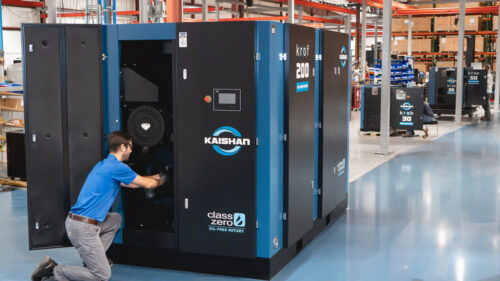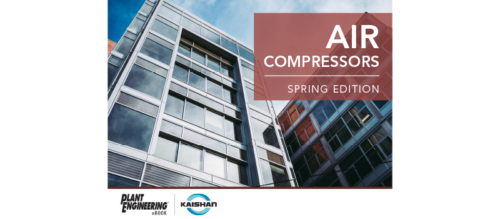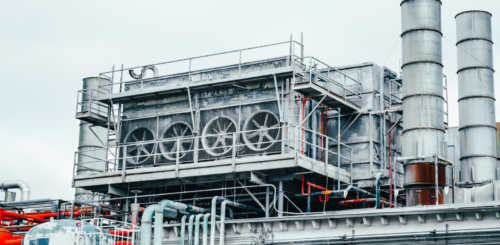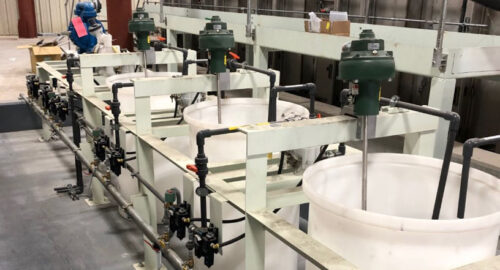Tie your supply chain to energy efficiency
There are numerous opportunities throughout the supply chain to reduce energy consumption and deliver a more sustainable plant such as HVLS fans, dock doors, and LED lighting.
We’ve already established that going green and increasing sustainability is becoming a fact of corporate life, none more so than in industrial buildings and their supply chains. In fact it’s become such a huge initiative that on August 30, 2012, President Obama signed into effect the Executive Order – Accelerating Investment in Industrial Energy Efficiency aimed at increasing and expanding these energy efficiency efforts with investments to reduce energy use in industrial buildings and their supply chains.
These developments couldn’t have come at a better time, as some estimate that the supply chain and logistics operations can represent upward of 75% of a company’s energy usage and environmental footprint. The energy required to maintain operations has led companies to begin seeking alternative methods to conserve energy, from introducing intermodal strategies to retrofitting or designing facilities with energy-efficient LED bulbs.
But a holistic awareness of their building and supply chain and its environmental, social, and economic impacts is essential for companies that want to seize the opportunity to increase energy savings. Many facilities are making adjustments to policies and procedures that will allow them to now run a more energy-efficient business, and many are turning their focus toward the loading dock and in their buildings to start their sustainability programs.
For a variety of reasons, the loading dock area presents significant challenges when it comes to preventing airflow from entering or exiting the facility. If the dock is not sealed properly, heated, and cooled, energy loss can be substantial and steal thousands of dollars from the operating budget, defeating the good intentions of the sustainability program. Here are some ways companies are starting to make changes to their sustainability and energy conservation plans with the loading dock.
Starting at the top
Increasing air circulation and quality helps minimize floor condensation, keeping loading dock areas drier and ultimately safer for foot and forklift traffic. Additionally, the improved air circulation created by the HVLS can enhance indoor air quality in dry storage and other distribution applications by dispersing the harmful fumes produced by the trucks and forklifts at the dock door during loading and unloading, creating a safer, more energy-efficient environment.
HVLS fans are an excellent addition to any overworked HVAC system. They can help to regulate a facility’s temperature year-round from floor to ceiling, permitting an increase or decrease in thermostat temperature setting between 3 and 5 degrees without realizing any negative temperature changes, either hot to cold. Managing the internal temperature of a building creates the opportunity to realize energy savings of up to 4% per degree change, which can really do a lot for those pesky energy bills and energy efficiency.
HVLS fans can also help companies qualify for and earn credit toward LEED (Leadership in Energy and Environmental Design) Certification in energy efficiency and atmosphere, indoor environmental air quality, and innovation and design. LEED certification provides independent, third-party verification that a building, home, or community was designed and built using strategies aimed at achieving high performance in key areas of human and environmental health, which are highly focused on energy savings, increasing air quality, and building sustainability.
Keep the elements out
Forklifts are essential for loading and unloading trailers. These vehicles are forced to maneuver product within a confined space, which often results in damage to dock doors from forklift impacts, especially when employing traditional metal overhead doors. These doors are similar to a standard garage door, hardly built to survive a direct impact from a forklift.
Even if a traditional door is not damaged to the point of needing repair or replacement, the guide rollers can still be removed from their sheet metal door track guide after an impact, causing misalignment of the door panel, which creates costly gaps and can even render doors inoperative.
As the name implies, impactable doors do not resist the force of the impact from a forklift or other material handling equipment. Instead, the heavy-duty retractable plungers release the panel from the door guide, absorbing the impact and preventing damage. A quick pull sets the door back in place, making it operational in just minutes and once again protecting the doorway against forklifts and energy loss.
Leave no surface uncovered
Standard pit-mounted dock levelers provide safe trailer access for forklifts, but the nature of their design creates gaps along the perimeter of the leveler where air infiltration and escape can occur, creating an inviting environment for energy loss.
However, there is a solution to help prevent energy loss through the gaps around the dock leveler. Most new and existing pit-style dock levelers can be outfitted with an advanced weatherseal system composed of a combination of durable open-cell foam and heavy-duty vinyl that provides a superior perimeter seal along the sides and rear of the dock leveler to block dirt, debris, and insects, and, most importantly, prevent energy loss that is vital to a sustainability program.
As an additional layer of protection against energy loss on the loading dock, dock levelers can be coated on the underside with spray foam insulation to minimize the platform’s ability to conduct heat or cold, further sealing off the dock from the elements.
Reducing your carbon footprint
News of global warming, melting ice caps, displaced wildlife, electric cars, and EPA emission regulations is everywhere, and undoubtedly everyone has read or watched something pertaining to their carbon footprint recently. Replacing standard incandescent bulbs with energy-efficient, long-lasting LED lights can make a significant difference in energy usage. Studies have suggested that switching out 100 incandescent lights with LEDs can save the average warehouse facility $100,000 over the life of the lights.
Manufacturers today have made it easier than ever by offering dozens of LED lights for just about any application that are waiting to help reduce your carbon footprint, lower total building energy usage, and save on costs. Some of these include:
- Impactable LED lights for tough applications
- LED lights with flexible arms for optimal positioning
- Portable LED lights for different areas of a building
- Replacement lamps for current, broken, or malfunctioning equipment.
- Bright and energy-efficient, most 18 W LED lights offer a 60,000 hour lamp life to help your facility save on energy and replacement costs.
The right direction on sustainability
Utilizing the proper loading dock equipment is the first step in maintaining sustainability on the loading dock. Configuring equipment to operate in a predetermined sequence ensures that the dock offers protection for both dock workers and the energy program.
Master control panels combine the separate controllers for vehicle restraints, dock levelers, overhead doors, and dock lights into one box.
This not only saves wiring and installation costs, but also allows the equipment to be programmed such that the door cannot open or remain open and the dock light runs only while loading is in process. A sealed loading dock area is key to a successful sustainability program. A properly designed loading dock system will enable operations to achieve both peak energy and optimal logistics efficiency. Product enters and leaves a facility through the loading dock area, and it is there that supply chain sustainability begins.
Danielle Holleran is a communications specialist for Serco Entrematic, Carrollton, Texas. The company’s website is www.sercoentrematic.com.
Do you have experience and expertise with the topics mentioned in this content? You should consider contributing to our CFE Media editorial team and getting the recognition you and your company deserve. Click here to start this process.





